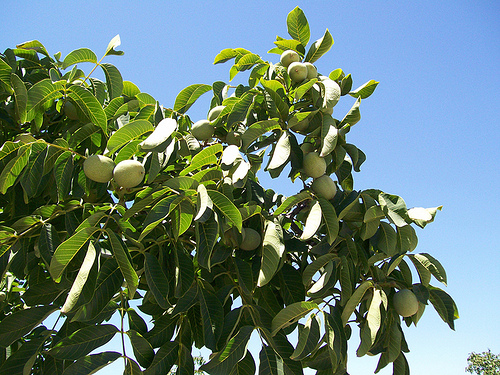This is the ninth installment of the Organic 101 series that explores different aspects of the USDA organic regulations.
According to a 2011 survey by the Organic Trade Association, organic beverages made up about 12% of total organic food sales growth. Organic wine contributed to that growth, matching pace with conventional wine purchases. So what is organic wine?
As with other USDA organic products, organic wine is made without using prohibited substances or genetic engineering (see Allowed and Prohibited Substances). It undergoes the same rigorous requirements of USDA organic certification as other products throughout its lifecycle (see Five Steps to Organic Certification). And, in addition to being overseen by the USDA National Organic Program, it has to meet the requirements of the Alcohol and Tobacco Tax and Trade Bureau, especially for sulfite labeling requirements. Read more »
This post is part of the Science Tuesday feature series on the USDA blog. Check back each week as we showcase stories and news from USDA’s rich science and research profile.
Organic agriculture is proving itself to be a veritable cornucopia, according to the results of the first-ever report on certified USDA organic production, which we released earlier this month. While the number of organic farms is a fraction of its conventional counterpart, an organically produced version of virtually every crop or animal product is now available in the United States.
This was the first time the National Agricultural Statistics Service (NASS) conducted this survey, which means that we cannot see trends yet, but we can already easily see some of the impacts of organic production in the United States. From four farms in Alabama, Alaska or Delaware to 1,898 farms in California, every state in the nation is now home to USDA-certified organic producers. And while these farmers make up less than a half of one percent of all U.S. farmers, they already sell more than $3.5 billion worth of agricultural products. Read more »

Reece Latron uses a tractor to carry baskets of greens harvested from Amy's Organic Garden in Charles City, VA. While the certification system is rigorous to ensure integrity of the USDA organic label, thousands of producers and handlers continue to invest in these activities to market their products as organic. USDA Photos by Lance Cheung
The USDA organic label is backed by a certification system that verifies farmers or handling facilities located anywhere in the world comply with the USDA Organic Regulations. Certification entails five steps: Read more »

To protect the integrity of the organic industry and its products, farms must certify that their operations are following USDA organic regulations. The USDA’s Agricultural Marketing Service offers farms resources to help offset the certification costs.
Annual organic certification fees allow certifiers to carry out their responsibilities. These fees vary according to an operation’s size and other variables. In light of that, the USDA organic cost share programs help to ensure that these costs don’t discourage those wanting to pursue organic certification. The programs make certification more affordable by reimbursing producers and handlers for as much as 75%—up to a maximum of $750 a year—for their certification costs. Eligible costs include application fees, inspection fees, travel for certification inspectors, and even postage. Read more »
This is the sixth installment of the Organic 101 series that explores different aspects of the USDA organic regulations.
The National Organic Standards Board (NOSB) is made up of dedicated public volunteers appointed by the Secretary of Agriculture. It advises the National Organic Program (NOP), a part of the Agricultural Marketing Service (AMS), on what substances should be allowed or prohibited in organic agriculture and recommends standards, policies, or guidance to help shape the organic regulations and the organic certification process. Read more »

Agriculture Deputy Secretary Kathleen Merrigan with members of Hip Hop Public Health. The organization educates others about the importance of regular exercise and healthy eating.
It’s officially summer and the USDA Farmers Market is back in full swing. An increasingly popular destination for Washington, D.C., residents and visitors of the National Mall, the market regularly attracts hundreds of customers each Friday during the summer and early fall. Come see some of your favorite vendors and USDA staff during the 2012 outdoor season. Read more »



